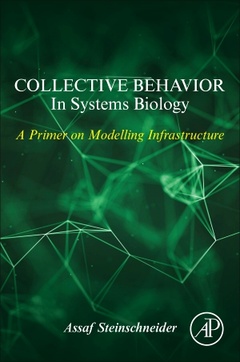Description
Collective Behavior In Systems Biology
A Primer on Modeling Infrastructure
Author: Steinschneider Assaf
Language: English
Subject for Collective Behavior In Systems Biology:
260 p. · 15x22.8 cm · Paperback
Description
/li>Contents
/li>Readership
/li>Biography
/li>Comment
/li>
1. Change/differential equations2. Consensus/linear algebra3. Alternative infrastructure/series, numerical methods4. Systems/input into output5. Managing processes/control6. Best choices/optimization7. Chance encounters/random processes8. Organized behavior/networks
: graduate students in systems biology; researchers with biological/biomedical background willing to learn computational modelling
- Introduces basics of mathematical and abstract methods for understanding, predicting, and modifying collective behavior in cellular systems
- Targets biomedical professionals as well as computational specialists who are willing to take advantage of novel high-throughput data acquisition technologies




